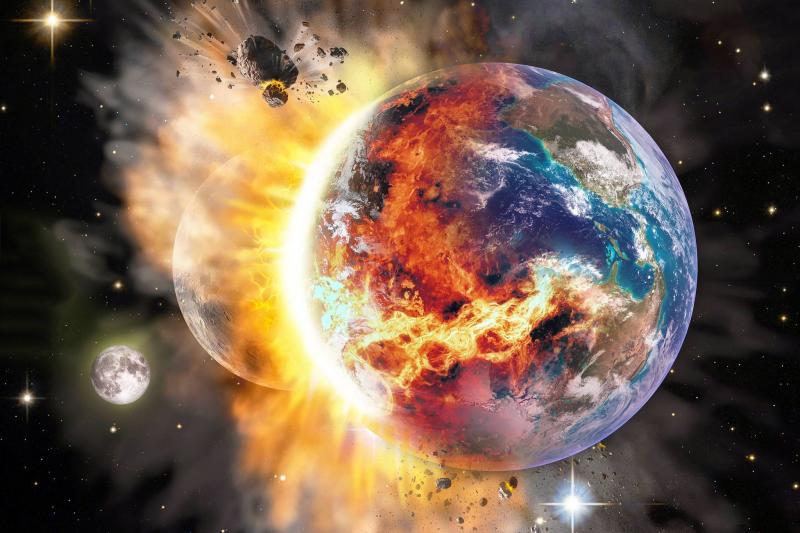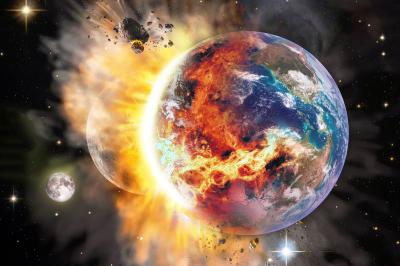A recent study involving mineral ores from deep within the Moon has revealed new evidence supporting the idea that the Moon formed as a result of a collision with an ancient planet long ago. This planetary collision, believed to have occurred around 4.5 billion years ago, involved a Mars-sized planet named "Theia" that shattered into fragments of hot volcanic debris upon impact with Earth.
Scientists have stated that some remnants of "Theia" appear to be buried in dense and massive "spots" within the depths of Africa and the Pacific tectonic plates; however, there is not enough evidence regarding the location of the remaining debris from "Theia". New data from NASA's Gravity Recovery and Interior Laboratory (GRAIL) spacecraft has identified large deposits of iron and titanium ores deep within the Moon, suggesting that other remnants of "Theia" contributed to the formation of Earth's Moon.
Adrian Brekitt, a planetary geophysicist from the German Aerospace Center in Berlin, described the GRAIL findings as "fascinating." The new research paper from his team, published in the journal Nature Geoscience, focused on "gravity anomalies" deep beneath the Moon's surface: dense and heavy pockets of material identified by GRAIL sensors. Brekitt stated, "Analyzing these differences in the Moon's gravitational field allowed us to peek beneath the surface."
Two similar, dense, and unusual regions in the Earth's mantle, known as LLVPs, provided credibility to the theory that a planetary collision led to the Moon's formation. One is located beneath the African tectonic plate, and the other under the Pacific tectonic plate. Their existence was confirmed when geologists found that seismic waves slowed significantly at a depth of 2,900 kilometers in both regions, differing from other parts of the Earth. Scientists believe that the material in the LLVPs is 2% to 3.5% denser than the surrounding mantle.
Last year, researchers from the California Institute of Technology proposed the idea that the LLVP material developed from a small amount of "Theia" that entered the lower mantle of early Earth. To support this, the team asked Professor Hong Ping Ding at the Shanghai Astronomical Observatory to explore this idea using his pioneering methods. After conducting a series of simulations, Ding discovered that following the impact that led to the Moon's formation, a significant amount of "Theia" material (around 2% of Earth's mass) entered the lower mantle of the primordial Earth.
Qian Yuan, a geophysicist at Caltech who also worked on this project, stated, "Through meticulous analysis of a wide range of rock samples, alongside more accurate giant impact models and models of Earth's development, we can infer the physical composition and orbital dynamics of primitive Earth, 'Gaia,' and 'Theia'."




